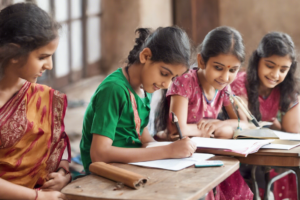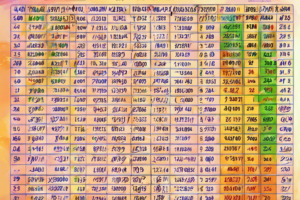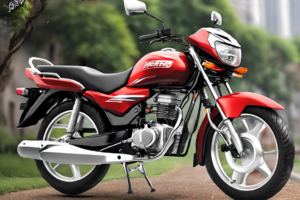Kerala, located in the southernmost part of India, is renowned for its rich culture, vibrant traditions, and stunning natural beauty. One of the aspects that truly sets Kerala apart is its diverse and multicultural population. The state’s demographics are a tapestry of different communities, religions, and ethnicities, each contributing to the unique identity of Kerala. In this article, we will delve into the diverse cast of The Kerala Story, exploring the different facets of this multicultural society.
Understanding Kerala’s Demographics
Kerala is known for its high literacy rates, strong healthcare infrastructure, and progressive social indicators. This has attracted people from different parts of the country and the world to settle in Kerala. The state’s population includes indigenous communities, migrants from other Indian states, as well as a significant expat population.
Indigenous Communities
Kerala’s indigenous communities, such as the Adivasis (tribal communities), have a long history in the region. These communities have unique cultural practices, languages, and traditions that have been preserved for generations. They have made significant contributions to Kerala’s cultural heritage and continue to play a vital role in the state’s social fabric.
Migrant Communities
Kerala has also been a melting pot of different migrant communities over the years. People from various parts of India, including Tamil Nadu, Karnataka, Andhra Pradesh, and West Bengal, have made Kerala their home. This has led to a rich diversity of languages, cuisines, and customs in the state.
Expat Population
Additionally, Kerala has a large expat population, with many Keralites migrating to countries like the Gulf nations, the United States, and Europe in search of better employment opportunities. These expats often bring back influences from their host countries, further enriching Kerala’s cultural landscape.
Cultural Diversity in Kerala
The diverse cast of The Kerala Story is best exemplified by the state’s rich cultural tapestry. Kerala is known for its colorful festivals, traditional arts forms, and mouth-watering cuisine, each reflecting the amalgamation of different influences.
Festivals
Kerala is home to a multitude of festivals celebrated by different communities throughout the year. Whether it’s the Onam festival celebrated by Malayalis, the Vishu festival marking the Malayalam New Year, or the Thrissur Pooram showcasing Kerala’s temple culture, each festival adds a unique hue to the state’s cultural spectrum.
Arts and Traditions
Kerala boasts a vibrant performing arts scene, with traditional art forms like Kathakali, Mohiniyattam, and Kalaripayattu captivating audiences worldwide. These art forms have roots in Kerala’s history and mythology, showcasing the creativity and skill of the state’s artists.
Cuisine
Kerala’s cuisine is a delightful fusion of flavors and spices from various regions. From the spicy fish curries of the coastal areas to the aromatic biryanis of the Malabar region, Kerala’s culinary offerings are a treat for food enthusiasts.
The Harmonious Coexistence
Despite its diverse population, Kerala has a long-standing tradition of communal harmony and peaceful coexistence. People from different backgrounds live and work together, celebrating each other’s festivals and traditions. This unity in diversity is a testament to Kerala’s progressive outlook and inclusive ethos.
Preserving Kerala’s Identity
As Kerala continues to evolve and modernize, there is a growing emphasis on preserving the state’s unique identity and cultural heritage. Various initiatives are being undertaken to document and promote traditional art forms, languages, and customs, ensuring that future generations can appreciate the richness of Kerala’s diverse cast.
Frequently Asked Questions (FAQs)
1. What makes Kerala’s population so diverse?
Kerala’s diverse population is a result of historical migrations, both within India and from other countries. The state’s inclusive and welcoming environment has attracted people from various backgrounds.
2. How do indigenous communities contribute to Kerala’s culture?
Indigenous communities in Kerala, such as the Adivasis, have unique cultural practices that have enriched the state’s cultural heritage. Their traditional knowledge, art forms, and sustainable practices are integral to Kerala’s identity.
3. What are some of the popular festivals in Kerala celebrated by different communities?
Kerala’s calendar is filled with vibrant festivals like Onam, Vishu, Thrissur Pooram, and Eid-ul-Fitr, celebrated by different communities in the state. These festivals showcase the diversity and unity of Kerala’s population.
4. How has migration shaped Kerala’s culinary landscape?
Migration has brought diverse culinary influences to Kerala, resulting in a rich tapestry of flavors and dishes. The state’s cuisine reflects the culinary traditions of different communities, creating a gastronomic paradise.
5. What can visitors learn from Kerala’s harmonious coexistence?
Visitors to Kerala can witness firsthand the peaceful coexistence of people from different backgrounds. This harmonious living is a lesson in tolerance, understanding, and mutual respect that can be emulated globally.
Conclusion
The diverse cast of The Kerala Story is a testament to the state’s inclusive spirit and multicultural heritage. As Kerala embraces the future, it is crucial to celebrate and preserve the diverse identities that make the state truly unique. Through festivals, arts, cuisine, and communal harmony, Kerala continues to shine as a beacon of diversity in India.



